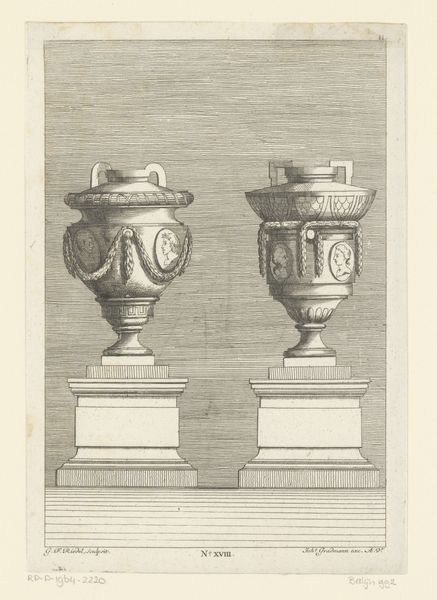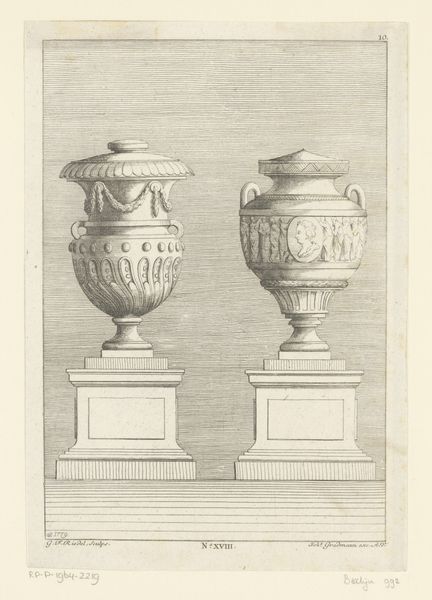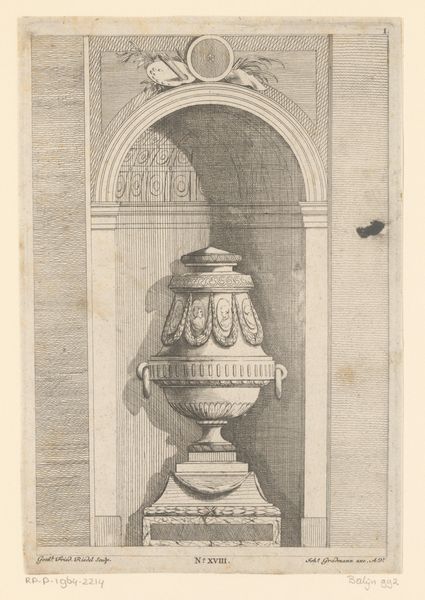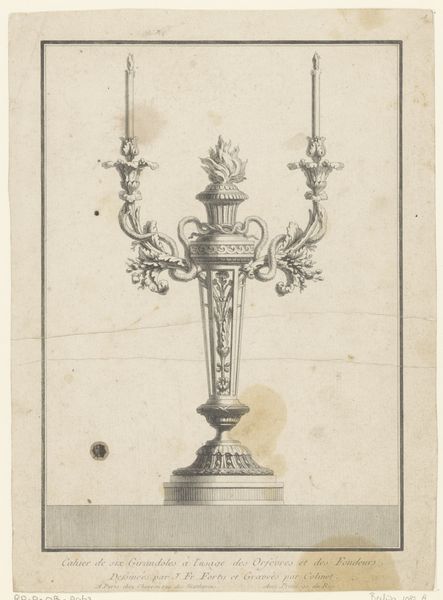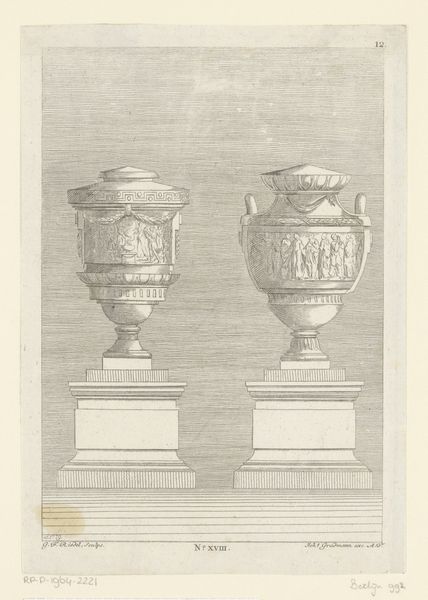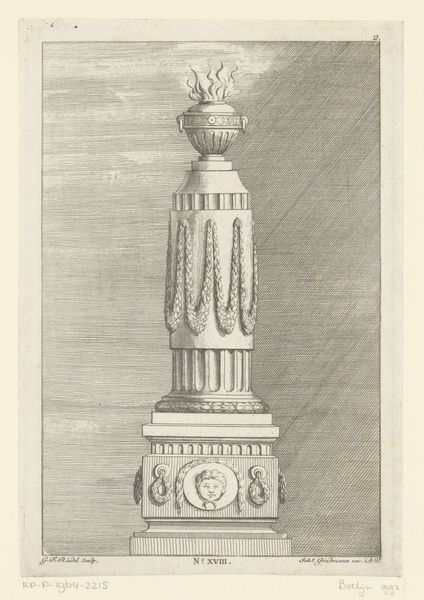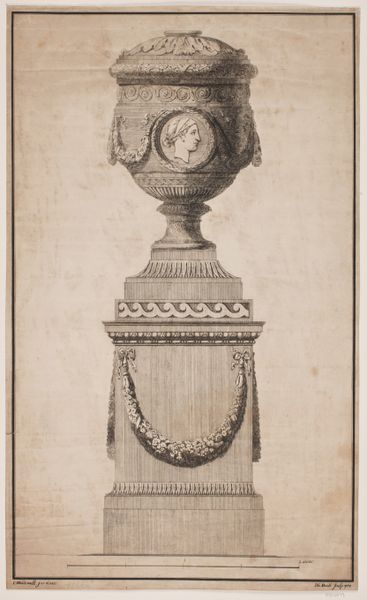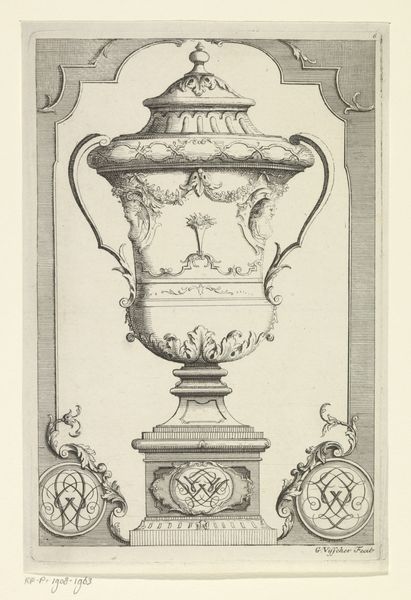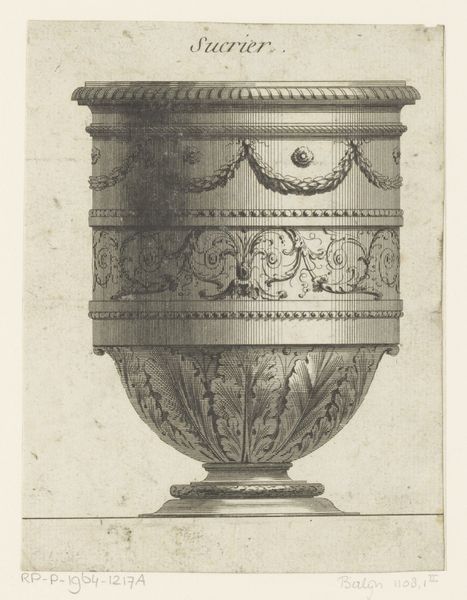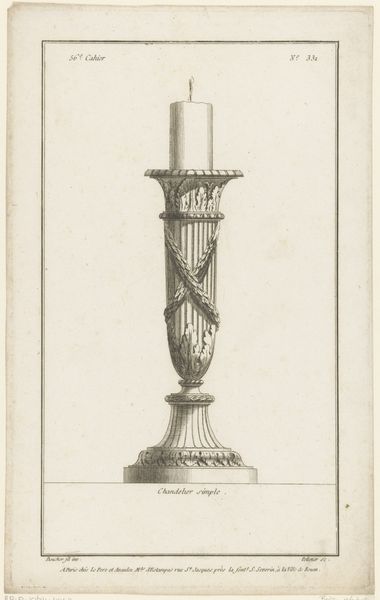
print, engraving
#
neoclacissism
# print
#
geometric
#
decorative-art
#
engraving
Dimensions: height 220 mm, width 155 mm
Copyright: Rijks Museum: Open Domain
Editor: This engraving from 1778, entitled "Two Urns on Pedestals" by Gottlieb Friedrich Riedel, strikes me as quite austere. The clean lines and symmetry create a very formal mood. I am curious though, how might we understand its deeper significance? Curator: From a materialist perspective, this isn’t just a picture of urns, but a representation of a whole social structure. Think about it: what materials would have been used to create such urns in the 18th century, and who would have been involved in their making and distribution? Editor: I suppose skilled artisans working with clay or marble, maybe even precious metals if they were wealthy patrons. Curator: Exactly. This print allows wider access to decorative art than ever before. The engraving technique itself – the labor involved in precisely cutting the lines, the press used for reproduction – makes these designs accessible, consumable. Would you say that affects our perception of the items pictured? Editor: It's interesting to think about how this print democratized the aesthetic. Were these urns necessarily objects of the wealthy or were prints a way for the emerging middle class to emulate the styles of aristocracy? Curator: Precisely! This is neoclassical design finding new markets. The production and consumption of even an image carries powerful messages. How is taste formed by these prints, and whose labor is essential, yet unseen? Editor: It’s really fascinating to think of the print itself as an object of labor, not just a window onto some grand urn, democratizing access to design at scale. Curator: Right. We’ve moved beyond simply admiring "beauty" to interrogating how its means of production and circulation reflect wider social power dynamics.
Comments
No comments
Be the first to comment and join the conversation on the ultimate creative platform.
